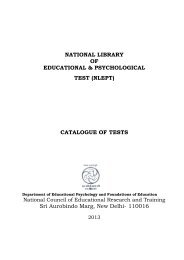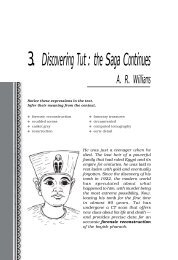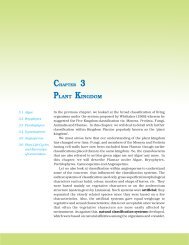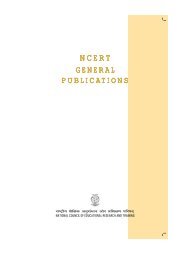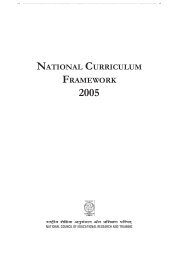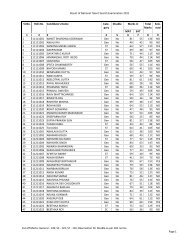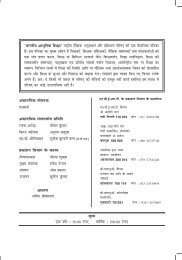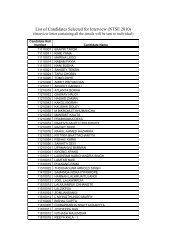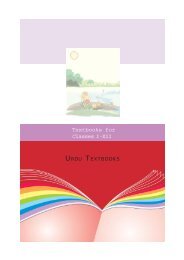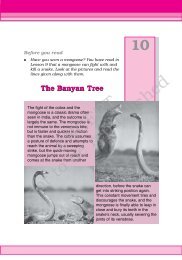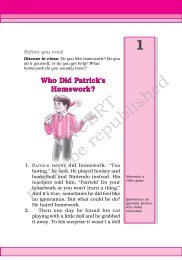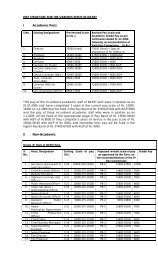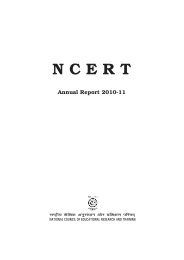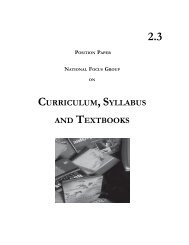indian education - National Council Of Educational Research And ...
indian education - National Council Of Educational Research And ...
indian education - National Council Of Educational Research And ...
Create successful ePaper yourself
Turn your PDF publications into a flip-book with our unique Google optimized e-Paper software.
46 Journal of Indian Education August 2007<br />
diversity, of democratic pluralism, thus<br />
became the principle of Indian civilisation.<br />
Not being caged in brick, wood and<br />
iron, Indian thinkers were surrounded<br />
by and linked to the life of the forest. The<br />
living forest was for them their shelter,<br />
their source of food. The intimate<br />
relationship between human life and<br />
living nature became the source of<br />
knowledge. Nature was not dead and<br />
inert in this knowledge system. The<br />
experience of life in the forest made it<br />
adequately clear that living nature was<br />
the source of light and air, of food and<br />
water (Quoted by Vandana Shiva, 1988,<br />
p. 55).<br />
Krishnamurti’s idea of a school with<br />
Open Doors recall Gandhi’s idea of<br />
Trusteeship, some of the basic principles<br />
of which were codified under the<br />
Mahatma’s direction:<br />
Trusteeship provides a means of<br />
transforming the present capitalist order<br />
of society into an egalitarian one. It gives<br />
no quarter to capitalism, but gives the<br />
present owning class a chance of<br />
reforming itself. It is based on the faith<br />
that human nature is never beyond<br />
redemption (Dantwala, 1986, p. 40).<br />
Conclusion<br />
The urgent need of the hour is vividly<br />
described by Mark Edwards, who has<br />
been following environmental issues for<br />
close to forty years.<br />
Humanity will have to put aside the<br />
deep divisions it has maintained for<br />
thousands and thousands of years and<br />
take practical steps to solve this problem.<br />
The prize will be to deflect military<br />
spending, currently one trillion dollars of<br />
global taxpayer’s money a year, to pay to<br />
reinvent the modern world so that it is<br />
compatible with nature. This would<br />
require a coalition of those in the peace<br />
movement, environmentalists, those who<br />
support the campaign against poverty –<br />
and the silent majority. They have to find<br />
their voice. Unless they do, a hard rain’s<br />
a-gonna fall (Edwards, 2006, p. 8).<br />
If what Peter Drucker predicts is true<br />
and the world is moving towards a<br />
knowledge society then knowledge will<br />
have to be harnessed to nurturing the<br />
Earth, not savaging it. Krishnamurti<br />
suggested this transformation would<br />
require that human beings unlearn the<br />
habits of thought bred by greed and<br />
aggression.<br />
“Indian society seemed to develop<br />
more by successive religious<br />
transformation than by violence”,<br />
Kosambi remarks, adding that society<br />
“failed to develop further for much the<br />
same reason” (Kosambi 1956). India<br />
might have emerged as a more<br />
homogeneous society in the twentieth<br />
century, if its mode of development in the<br />
ancient world had been more like that of<br />
European cultures — if overt violence<br />
had been an instrument of subduing the<br />
cultures of technologically less advanced<br />
people.<br />
There was rarely the bitter, violent<br />
conflict between the most primitive and the<br />
most developed elements of society in India<br />
that one finds in the devastating interaction<br />
in the devastating interaction of Spanish<br />
conquistadors . . . with tribal cultures in<br />
South America (Kosambi, 1956, p. 8).<br />
Kosambi’s attribution of a positive<br />
role to religion in India is intriguing,<br />
coming as it does from a historian with a<br />
Marxist view of history. But then<br />
Kosambi was an historian for whom the<br />
relationship between theory and



